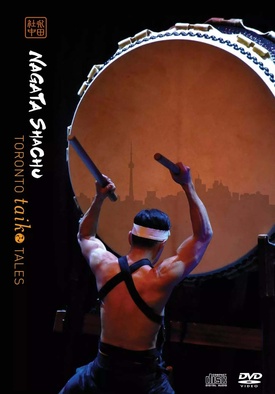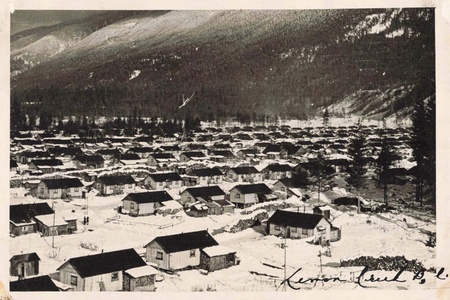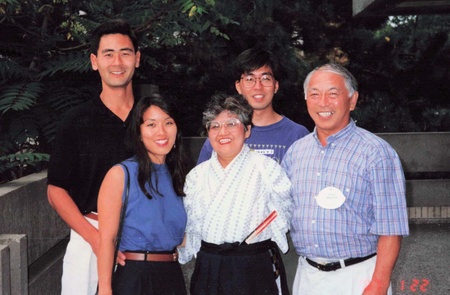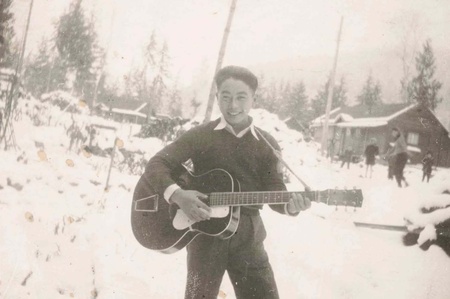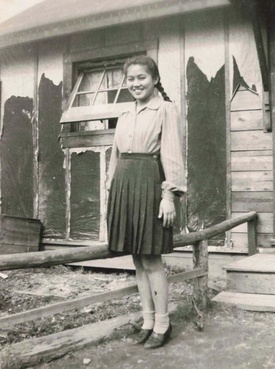Another career highlight came in 2005 when the group had two tours in Italy and one across the US, which evoked a feeling that ‘we made it.’ The reception they received was overwhelming:
“The people welcomed us with open arms and the hospitality we received was incredible. We played in many old opera houses where the stages are slanted downwards which proved a very big challenge for us as all our drums are on wheeled stands. Nonetheless, those tours gave our group a huge boost in confidence that we could make an impact beyond our Canadian borders.”
That tour was followed by one across the US of more than 20 states including Louisiana, Florida, Colorado, North and South Carolina, Pennsylvania, Massachusetts, Michigan, and New York. They’ve also performed in Lebanon and Mexico.
Although their touring schedule slowed down since the economic crisis of 2008, Nagata Shachu still performs an average of at least 40 shows a year including concerts, festivals, educational programs, and corporate events. They still do the occasional tour but usually for no more than three cities at a time.
Nagata Shachu has recorded three CDs—Hymus Road (2013), Toronto Taiko Tales (2017), and Tsuzure (2008); two as the Kiyoshi Nagata Ensemble—Kiro (2005) and Koku (2002); and five DVDs—10th Anniversary Concert (2008); Iroha (2011); 15th Anniversary Concert (2019); Toronto Taiko Tales (2017); and Mochizuki (2019).
“My recording career was the bedrock for creating Nagata Shachu. In fact, one of the main reasons I created Nagata Shachu was to be able to perform works off of my first solo CD. Before music streaming came along, a CD recording was like a business card. It legitimized your music and career so it was extremely necessary to advance the group. These days, having a recording is less important. Because taiko is such a visual art form, video production has become even more crucial in promoting Nagata Shachu and having an online presence.”
Introducing the eight members of the group, they are: long time member and associate director Aki Takahashi (she’s been in the group for 22 years) who is also “an amazing Japanese folk singer and shamisen player,” and other members come from Chinese, Korean, Japanese, and Filipino backgrounds: Naoya Kobayashi, Andrew Siu, Kevin He, Briana Lee, Marie Gavin, and Atsushi Kato.
In 2019, Kiyoshi was awarded Japan’s Foreign Minister’s Commendation in 2019 for the promotion of cultural exchange through art between Japan and Canada. And, in 2020, they were a finalist for the Toronto Arts Foundation Roy Thomson Hall Award for its contribution to Toronto’s musical life.
In 2021, Kiyoshi made his first visit to the internment camp sites in the Kootenays: Lemon Creek and New Denver, where his parents were interned. Ostensibly, it was for two different projects: the first called “Ghosts in the Forest” was an exploratory project consisting of musicians, actors, dancers and multimedia artists. The goal was to explore new ways of telling the story of the internment. The second phase of the project will be to take what we learned and turn it into something more concrete.
The project is important as we need to explore new ways to tell the story of internment to the younger generations in mediums that they are very familiar with. There are many books, documentaries and even plays about the internment, but very few that combine dance, spoken word, music, film and multimedia to tell the same story in a new and interesting way.”
The other project is a documentary Taiko: Music of the Strong, produced by the Ethnic Channels Group in Toronto, that follows his career as a taiko player and also looks at internment through the eyes of a third-generation Japanese Canadian.
The documentary came about after doing an episode called “Sounds of Canada” featuring Nagata Shachu. The producer became a big fan of the group and was impressed enough that he wanted to produce a documentary about Kiyoshi’s life.
“When he learned about my parents and their families being interned during the war, he thought it would be a great idea to explore the internment through my eyes as a third generation Japanese-Canadian. The original plan was to film me going to Japan to reunite with some of my taiko teachers, but unfortunately, covid restrictions made the trip impossible. Instead, we travelled to New Denver and Lemon Creek, respectfully, where my father and mother were interned when they were children.
“I had not been to the Kootenays before and was fortunate on both occasions to visit New Denver and Lemon Creek where my father and mother were interned. Visiting the Nikkei Internment Memorial Centre in New Denver had a profound impact on me to see the injustices and living conditions that my parents and 22,000 other Japanese Canadians went through during WWII. I feel as an artist that it is my duty to keep their stories alive.
“It was an emotional experience for me going to these sites. I did not realize how far they were in the interior of British Columbia, about an eight-hour drive from Vancouver. I learned that the first internees to arrive in New Denver had to live in canvas tents in what turned out to be one of the coldest and harshest winters at that time. It made me so sad to see what the living conditions were like.
“When I went to the Nikkei Memorial Internment Centre, they had a preserved ‘shack’ of where families would live (usually two small families or one family per shack). Needless to say, living conditions looked very primitive and antiquated with no plumbing or central heat. To see first hand what the living conditions were like and how isolated these camps were, was a very profound and moving learning experience for me.”
Describing the life of a Japanese Canadian taiko player in Toronto, he says:
“My daily life is pretty mundane. I teach six classes from my studio three nights a week, and my University of Toronto (U of T) class on Monday mornings. I have Nagata Shachu rehearsals on Thursdays and Sundays, and most Saturdays we have performances. During the times when I am not teaching or performing, I am doing a lot of administrative work. I like the fact that Nagata Shachu can be a known fixture in Toronto’s music scene, yet I can go about my daily life completely unrecognized.
“I never really pictured what Nagata Shachu would evolve into. It’s been through the hard work of a lot of past and present members, our students, board or directors, and supporters that Nagata Shachu has been able to grow and flourish over the last 25 years. The growth of the group happened in a series of small incremental steps.
“Along the way, we’ve been supported by organizations such as the JCCC, the Japanese Consulate and the Japan Foundation. The support I received from my late parents was instrumental for the success of my career and Nagata Shachu. For this, I am forever grateful to them.”
Thinking ahead to 2023, he says: “We will be working with a scratch DJ artist and two break dancers for the second concert of our 25th anniversary season on March 11. On June 10, we invited a new generation taiko solo artist Masayuki Sakamoto (formerly of Kodo) to collaborate with Nagata Shachu. We will also be performing with Toronto’s Esprit Orchestra at Koerner Hall to perform the contemporary piece for orchestra and taiko, Mono-Prism composed by Maki Isshi.”
* * * * *
Nagata Shachu: Official Website | Facebook
Nagata Shachu's 25th Anniversary concert "Twenty-Five"
© 2023 Norm Masaji Ibuki



